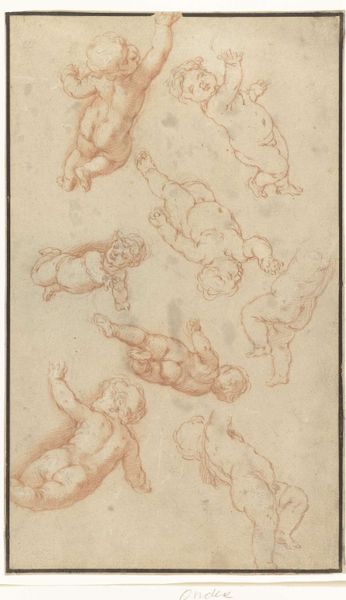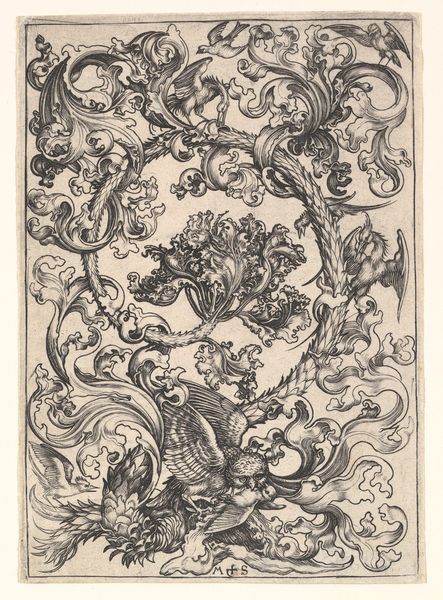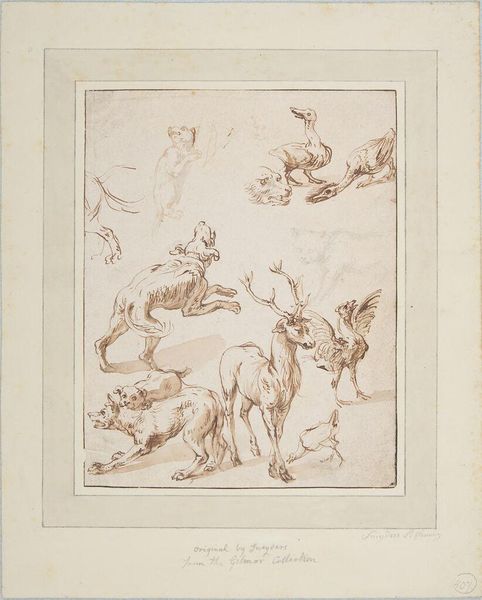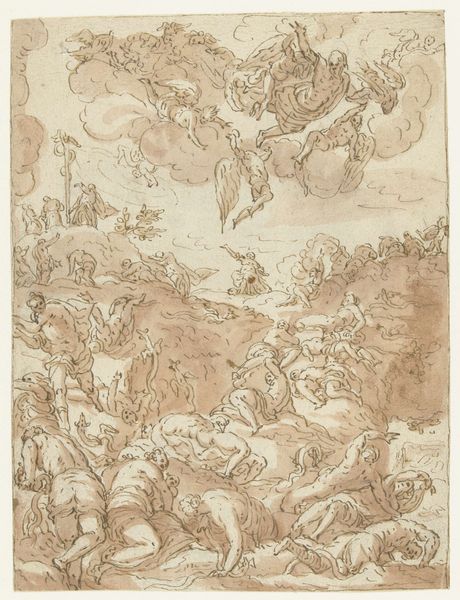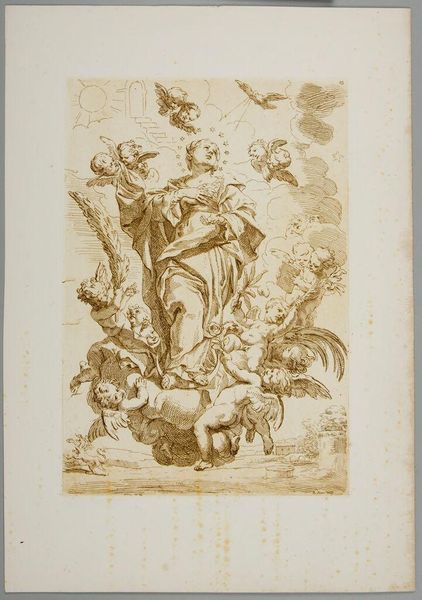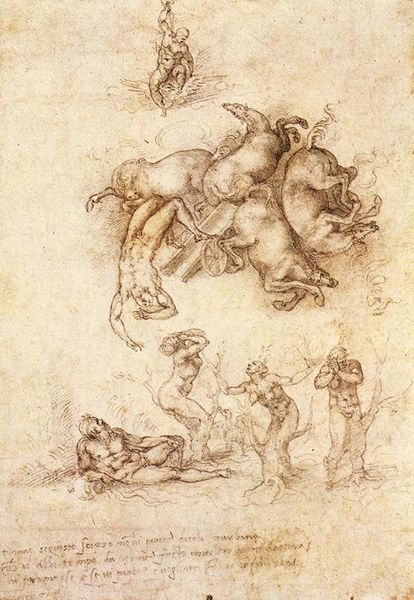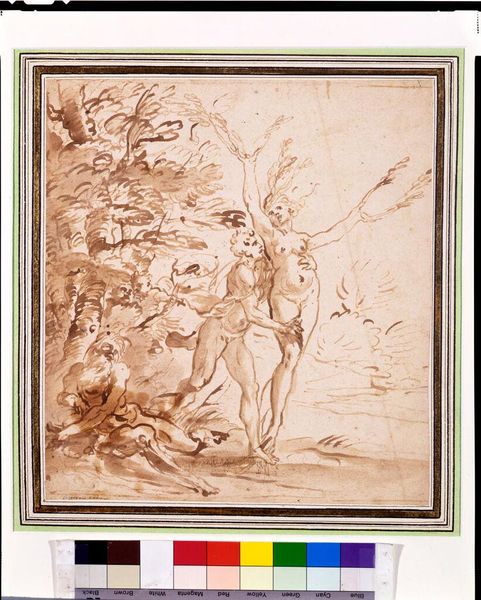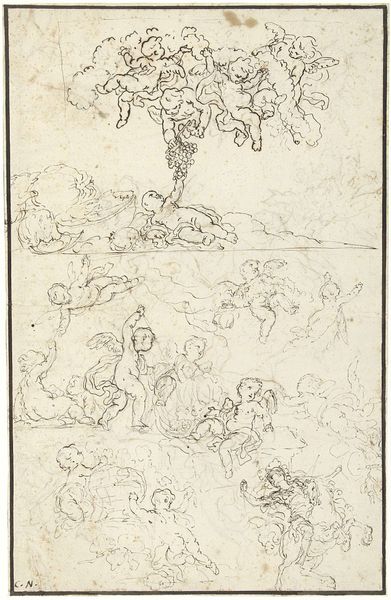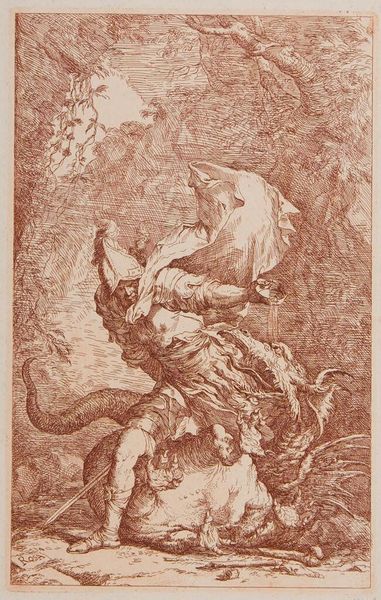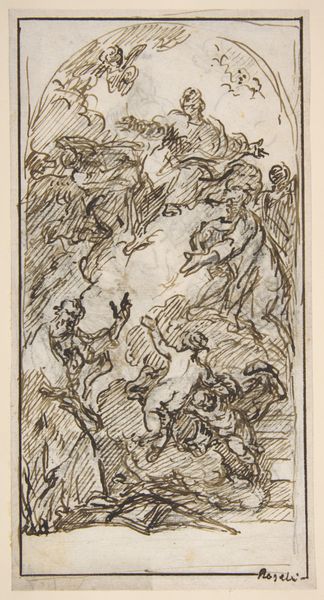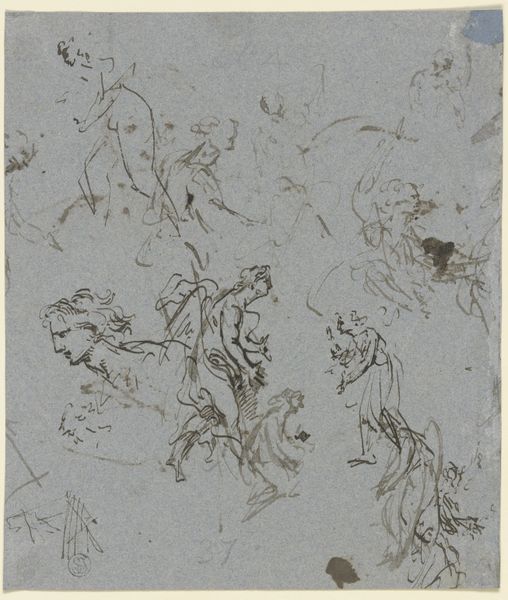
drawing, ink, graphite, pen
#
drawing
#
ink painting
#
landscape
#
figuration
#
11_renaissance
#
ink
#
horse
#
graphite
#
pen
#
italian-renaissance
Dimensions: 29.8 x 21.2 cm
Copyright: Public domain
Curator: It's incredible to observe how the essence of power, struggle, and grace is captured within Leonardo da Vinci's "Study sheet with horses" from 1513, rendered in pen, ink and graphite. What impressions does this present to you initially? Editor: It’s frenetic. The page buzzes with energy, like a stable full of restless stallions just before a battle. Even though it’s just sketches, the movement is palpable. There’s also a slightly manic feel—almost as though he couldn't contain the ideas. Curator: Da Vinci certainly filled the page! This "Study sheet" encapsulates a tradition where horses bear not only warriors but also complex symbolic weight. Consider, across various cultures, the horse can symbolize intellect, nobility, virility... Editor: I’m particularly drawn to the raw immediacy of the sketches, seeing as how rough these figures are! This isn’t some polished, idealized equestrian portrait—it’s Da Vinci grappling with the animal's musculature and energy, all captured with the ink seemingly flying off the pen. Look at those scribbled manes. Curator: Exactly! Observe how the variety of poses offers different angles, light, and tension, reflecting Da Vinci's anatomical interests—interests which echoed across other artists's interpretations, embedding a "canon" for illustrating power and strength. You know, each charging horse in Renaissance art became another symbol of cultural continuity... Editor: Absolutely, the composition reminds me of a mental brainstorm, scattered yet somehow unified by Da Vinci's keen eye and obsessive need to record and refine. He probably had sawdust between his toes. Curator: His exploration also feels almost anticipatory. What wars or patrons occupied Leonardo as he studied these chargers? Editor: Well, perhaps what strikes me most is the sheet’s timeless quality, which seems to transcend history. Even through the imagery of 16th century, it feels utterly relevant, capturing an animal energy that feels entirely eternal. Curator: It's a compelling glimpse into Da Vinci's mind, witnessing both scientific curiosity and pure artistic inspiration. It enriches our historical dialogue so substantially, wouldn’t you say? Editor: I would definitely concur. I am so happy I was able to take a closer look with you here today!
Comments
No comments
Be the first to comment and join the conversation on the ultimate creative platform.
